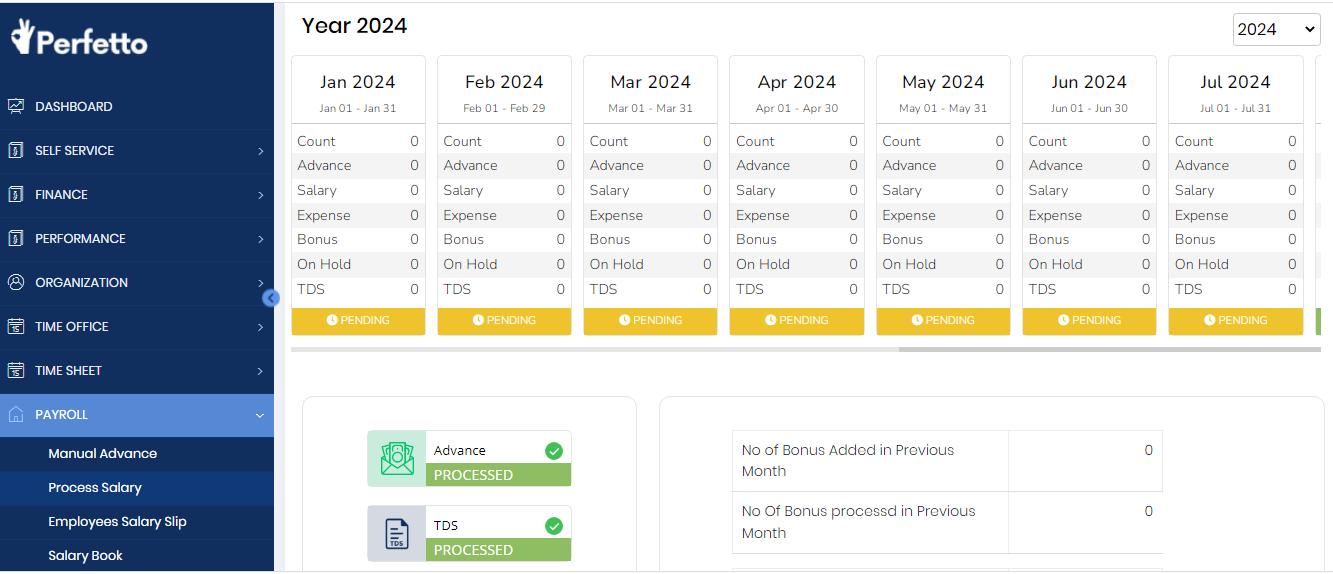
In today's fast-paced business environment, managing human resources efficiently is more important than ever. As organizations grow, handling HR functions manually or through outdated systems becomes increasingly challenging. That's where HR software comes in. HR software solutions, such as HR management systems, attendance, and payroll software, streamline essential HR processes, enhance productivity, and ensure compliance with regulations.


In this article, we will explore what HR software is, its key components, and how to choose the best HR software for your company, with a focus on PerfettoHR, a leading HR software provider.
What is HR Software?
HR software refers to a suite of digital tools designed to streamline and automate HR processes within an organization. These systems are designed to manage various functions such as recruitment, onboarding, payroll, attendance, performance management, employee records, and benefits administration.
An HR software solution can be a simple tool or an all-encompassing HR management system (HRMS) that integrates all of these functions into one platform. By reducing the need for manual
intervention, HR software helps businesses save time, minimize errors, and provide better employee experiences.
Key Components of HR Software
HR software typically includes a combination of modules that cater to different aspects of human resource management. These modules are:
1. HR Management System (HRMS)
A HR management system is a comprehensive tool that centralizes all HR-related tasks, including managing employee records, recruitment, performance management, and learning and development. It serves as the backbone of HR operations by providing a centralized database that ensures accuracy and accessibility of employee data.
2. Attendance Software
Attendance tracking is crucial for managing employee time, ensuring accurate work hours, and preventing time theft. Attendance software monitors employee presence, tracks absenteeism, and generates reports on working hours. This data can then be seamlessly integrated into payroll systems.
3. Payroll Software
Payroll software automates the calculation of wages, taxes, bonuses, and deductions, ensuring that employees are paid accurately and on time. It helps businesses comply with labor laws, manage tax filings, and generate detailed payroll reports, reducing the risk of errors and penalties.
4. Employee Self-Service (ESS) Portal
Many HR software solutions include a self-service portal that allows employees to view and update their personal information, request time off, view payslips, and access other relevant documents. This improves transparency and empowers employees to manage their HR-related tasks without the need for constant HR intervention.
5. Recruitment and Onboarding Tools
Modern HR software also includes tools for recruitment and onboarding. These features streamline the hiring process, from posting job listings to tracking candidates and managing the selection process. Once hired, onboarding tools guide new employees through their initial days and ensure they are effectively integrated into the company culture.
Benefits of HR Software
The implementation of HR software offers several benefits for businesses, regardless of size or industry. Here are some key advantages:
1. Time Efficiency
By automating routine HR tasks such as payroll processing, attendance tracking, and employee record management, HR software frees up time for HR professionals to focus on more strategic initiatives like employee development and organizational growth.
2. Data Accuracy
HR software ensures that data is entered accurately and consistently. With automated processes in place, the chances of human error are reduced, and data is updated in realtime.
3. Compliance Management
Compliance with labor laws, tax regulations, and employee rights is a critical concern for every business. HR software helps ensure that your organization remains compliant by keeping up-to-date with the latest regulations and automating tasks like tax calculations, wage reports, and benefits administration.
4. Cost Savings
Automating HR processes reduces administrative overhead, minimizes costly mistakes, and enhances overall productivity. Over time, the cost savings generated by using HR software can be substantial.
5. Employee Experience
With tools like employee self-service portals and performance management systems, HR software can significantly enhance the employee experience. Employees can access their personal information, view payslips, and submit leave requests on their own, reducing their dependency on HR staff.
How to Choose the Best HR Software for Your Company?
Choosing the right HR software is a crucial decision for any organization. While there are many HR software options available, it is important to select one that aligns with your company's unique needs, size, and goals. Here are some key factors to consider when making your choice:
1. Assess Your Company’s Needs
Before evaluating different HR software solutions, it's essential to assess the specific HR needs of your organization. Consider the following:
Size of your organization: Larger organizations may require more robust HR management systems with scalability, while smaller businesses might prefer simpler solutions that focus on payroll and attendance.
Key HR functions: What are the primary HR functions you need? If attendance and payroll management are your top priorities, look for solutions that excel in those areas.
Integration with existing systems: Ensure the software integrates smoothly with other systems your company already uses, such as accounting software or employee communication tools.
2. Ease of Use
HR software should be user-friendly, not only for HR teams but also for employees. A complex or difficult-to-navigate interface can lead to confusion and mistakes. Look for software with a clean, intuitive user interface and good customer support resources.
3. Scalability
As your business grows, your HR needs may evolve. Choose HR software that can scale with your company’s growth. Ensure that the system can accommodate increasing employee numbers, additional HR functions, and more complex reporting requirements.
4. Customization and Flexibility
Different businesses have different workflows and requirements. A one-size-fits-all approach may not work for every company. Choose HR software that can be customized to suit your specific business processes, whether that means adding custom fields, adjusting workflows, or configuring specific reports.
5. Support and Training
Choosing HR software with good customer support is crucial. Ensure the provider offers comprehensive training materials, onboarding support, and a responsive customer service team to assist when needed.
6. Pricing
While price should not be the only factor in your decision, it is important to evaluate the cost of the software in relation to your budget. Many HR software solutions offer tiered pricing plans based on company size, features, and service levels.
PerfettoHR: A Leading HR Software Solution
PerfettoHR is a comprehensive HR management system designed to meet the needs of organizations of all sizes. With a focus on attendance and payroll software, PerfettoHR helps companies automate essential HR functions while ensuring compliance and improving employee experience.

PerfettoHR offers a range of modules, including time and attendance tracking, payroll processing, performance management, recruitment, and employee self-service. The platform is known for its ease of use, scalability, and robust reporting capabilities. PerfettoHR’s seamless integration with existing business systems makes it a great choice for organizations looking to optimize their HR processes.
Conclusion
In today’s competitive business environment, HR software is an essential tool for streamlining operations, improving efficiency, and enhancing employee satisfaction. By selecting the right HR software solution, such as PerfettoHR, businesses can ensure that their HR functions run smoothly and are prepared to scale for future growth. Take the time to assess your company’s specific needs, consider the key features and benefits, and choose an HR software solution that aligns with your strategic goals.
